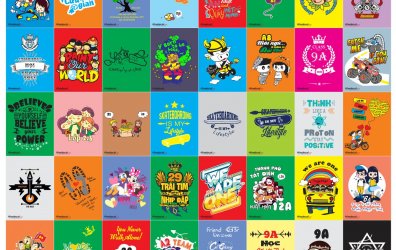zurirayden
Hey everyone, So, I wanted to throw this out there because I’ve been seeing a bunch of people (including myself) struggle when it comes to promoting NFT projects. Like, seriously — has anyone else completely botched their promoted NFT project and then wondered what went wrong?
When I launched my first small NFT collection, I was super hyped. I had the artwork ready, a decent concept, and even a little community forming. I thought, “Cool, now I just need to promote it and boom — sold out in a week.” Spoiler: that didn’t happen. In fact, I made a few mistakes that I only realized later, after watching others fall into the same traps.
Thinking Promotion Is Just About Hype
I used to think promoting an NFT project meant blasting it everywhere — Twitter, Discord, Telegram, Reddit — the louder, the better, right? Turns out, I was wrong. I was basically shouting into the void. What I didn’t get at first is that most NFT buyers (especially now that the hype cycle has cooled down) don’t just buy because of FOMO. They buy because they trust the team or see actual value in what’s being built. I had focused way too much on exposure and not nearly enough on connection.
If your NFT promo feels like a commercial instead of a conversation, people just tune out. I learned that the hard way.
What Didn’t Work (aka, My NFT Failures)
1. Buying fake engagement:
I’ll be honest — I paid for “NFT influencer” shoutouts early on. Some of them had real followers, some didn’t. Either way, it didn’t move the needle. You might get a few likes, but no one’s buying. Those audiences have seen hundreds of projects come and go.
2. Ignoring community feedback:
I was so caught up in my own roadmap that I barely listened to what my small Discord crowd wanted. I realized later that if you don’t make your community feel involved, they won’t stick around or spread the word.
3. Posting too much, too fast:
I went all in on spamming my links everywhere. Reddit threads, Twitter replies, even NFT groups on Facebook (don’t judge me). But it just came across as desperate and made the project look sketchy.
What Actually Helped (and Why It Felt Different)
When my second project rolled around, I decided to chill out a bit and actually listen. Instead of just promoting, I started participating in other NFT-related communities. I shared art, asked for honest feedback, and even collaborated with smaller creators. It didn’t explode overnight, but it built genuine interest.
The biggest shift? I stopped trying to “sell” my project and started talking about why I cared about it. That small change in tone got people curious — not because I had fancy graphics or buzzwords, but because it felt real.
Also, understanding what not to do helped me more than any guide on how to “go viral.” If you’re curious, here’s something that really helped me avoid repeating those rookie errors: Avoid these NFT project promotion mistakes. It breaks down the kind of stuff most of us overlook when we’re too focused on getting noticed.
A Few Small Tips That Made a Big Difference
Don’t promote before you’re ready.
If your roadmap, art, or minting process isn’t solid, wait. People can smell “unfinished” from a mile away.
Use your story.
I started sharing the reason behind the project — what inspired it, what I was trying to say through it. Turns out, people relate more to a story than a sales pitch.
Be consistent, not overwhelming.
Posting once a day with something thoughtful beats ten random posts that just say “check out my NFT.”
Collaborate.
I did a mini drop with another small NFT artist. We both shared each other’s work, and it brought in a mix of new followers that actually stuck around.
Keep expectations real.
Not every promoted NFT project will sell out, and that’s fine. The key is learning, improving, and keeping your reputation clean. One bad promo can make future ones harder.
Wrapping It Up
If you’ve ever felt like you’re spinning your wheels trying to promote your NFT, trust me, you’re not alone. The space changes so fast that even “best practices” go stale quickly. What I’ve learned is that being genuine, strategic, and patient goes a lot further than throwing money or noise at the problem.
So yeah, I’d love to hear from others who’ve tried promoting their NFT projects — what mistakes did you make, and what helped you recover? I’m still figuring it out myself, but at least now I know what not to do.
When I launched my first small NFT collection, I was super hyped. I had the artwork ready, a decent concept, and even a little community forming. I thought, “Cool, now I just need to promote it and boom — sold out in a week.” Spoiler: that didn’t happen. In fact, I made a few mistakes that I only realized later, after watching others fall into the same traps.
Thinking Promotion Is Just About Hype
I used to think promoting an NFT project meant blasting it everywhere — Twitter, Discord, Telegram, Reddit — the louder, the better, right? Turns out, I was wrong. I was basically shouting into the void. What I didn’t get at first is that most NFT buyers (especially now that the hype cycle has cooled down) don’t just buy because of FOMO. They buy because they trust the team or see actual value in what’s being built. I had focused way too much on exposure and not nearly enough on connection.
If your NFT promo feels like a commercial instead of a conversation, people just tune out. I learned that the hard way.
What Didn’t Work (aka, My NFT Failures)
1. Buying fake engagement:
I’ll be honest — I paid for “NFT influencer” shoutouts early on. Some of them had real followers, some didn’t. Either way, it didn’t move the needle. You might get a few likes, but no one’s buying. Those audiences have seen hundreds of projects come and go.
2. Ignoring community feedback:
I was so caught up in my own roadmap that I barely listened to what my small Discord crowd wanted. I realized later that if you don’t make your community feel involved, they won’t stick around or spread the word.
3. Posting too much, too fast:
I went all in on spamming my links everywhere. Reddit threads, Twitter replies, even NFT groups on Facebook (don’t judge me). But it just came across as desperate and made the project look sketchy.
What Actually Helped (and Why It Felt Different)
When my second project rolled around, I decided to chill out a bit and actually listen. Instead of just promoting, I started participating in other NFT-related communities. I shared art, asked for honest feedback, and even collaborated with smaller creators. It didn’t explode overnight, but it built genuine interest.
The biggest shift? I stopped trying to “sell” my project and started talking about why I cared about it. That small change in tone got people curious — not because I had fancy graphics or buzzwords, but because it felt real.
Also, understanding what not to do helped me more than any guide on how to “go viral.” If you’re curious, here’s something that really helped me avoid repeating those rookie errors: Avoid these NFT project promotion mistakes. It breaks down the kind of stuff most of us overlook when we’re too focused on getting noticed.
A Few Small Tips That Made a Big Difference
Don’t promote before you’re ready.
If your roadmap, art, or minting process isn’t solid, wait. People can smell “unfinished” from a mile away.
Use your story.
I started sharing the reason behind the project — what inspired it, what I was trying to say through it. Turns out, people relate more to a story than a sales pitch.
Be consistent, not overwhelming.
Posting once a day with something thoughtful beats ten random posts that just say “check out my NFT.”
Collaborate.
I did a mini drop with another small NFT artist. We both shared each other’s work, and it brought in a mix of new followers that actually stuck around.
Keep expectations real.
Not every promoted NFT project will sell out, and that’s fine. The key is learning, improving, and keeping your reputation clean. One bad promo can make future ones harder.
Wrapping It Up
If you’ve ever felt like you’re spinning your wheels trying to promote your NFT, trust me, you’re not alone. The space changes so fast that even “best practices” go stale quickly. What I’ve learned is that being genuine, strategic, and patient goes a lot further than throwing money or noise at the problem.
So yeah, I’d love to hear from others who’ve tried promoting their NFT projects — what mistakes did you make, and what helped you recover? I’m still figuring it out myself, but at least now I know what not to do.




